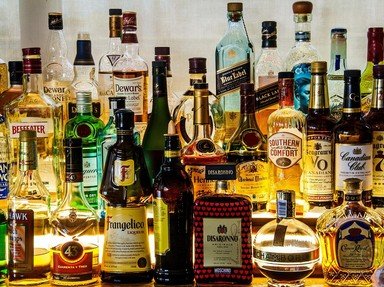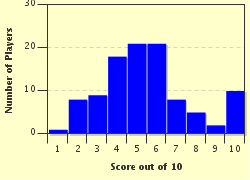Quiz Answer Key and Fun Facts
1. You see a bottle of California wine by a famous producer at a very modest price. On the label it says "Vinted and Bottled by Domaine de la Wine Snob." What does the phrase "vinted and bottled by" mean?
2. Looking at our same bottle of California wine, you will see that it says "Cabernet Sauvignon." How much of the wine in the bottle actually has to be made from Cabernet Sauvignon grapes?
3. In smaller letters under "Cabernet Sauvignon" there appear the words "North Coast." The technical term for this designation is American Viticultural Area (AVA). It basically tells you where the grapes used to make the wine were grown. Is the specification of an AVA an indication of quality?
4. Which of these terms on a bottle of California wine actually has some legal meaning?
5. Moving on to the French section, you pick up a bottle of Bordeaux. Which of these phrases would be the best indicator of a wine of superior quality?
6. Perhaps you would prefer a bottle of Burgundy. Which of these label designations would indicate a wine of the highest quality?
7. Let's move over to the Italian section. Is an Italian wine label required to show the principal grape variety used to make the wine?
8. Frizzante, spumante, vivace - if you see these words on an Italian wine label, what do they mean?
9. Champagne labels present their own special challenges. Suppose you saw the phrase "Blanc de Blancs" on the label. What would that tell you?
10. There is one wine that is famous for commissioning a world famous artist to design the label for its bottles in each vintage, a tradition that began in 1945. The labels are so popular that they themselves are considered collector's items. Which wine is it?
Source: Author
daver852
This quiz was reviewed by FunTrivia editor
WesleyCrusher before going online.
Any errors found in FunTrivia content are routinely corrected through our feedback system.

